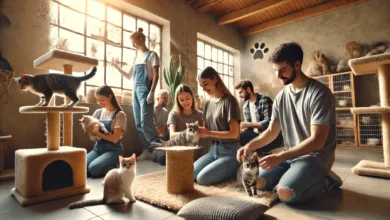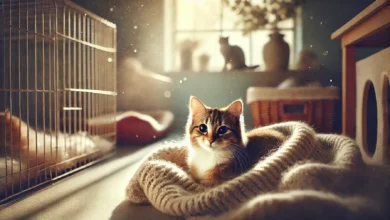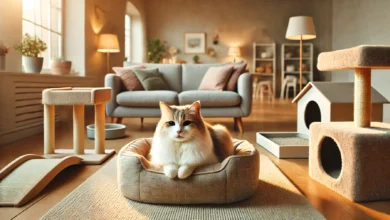Exploring Cat Personalities: Finding Your Match
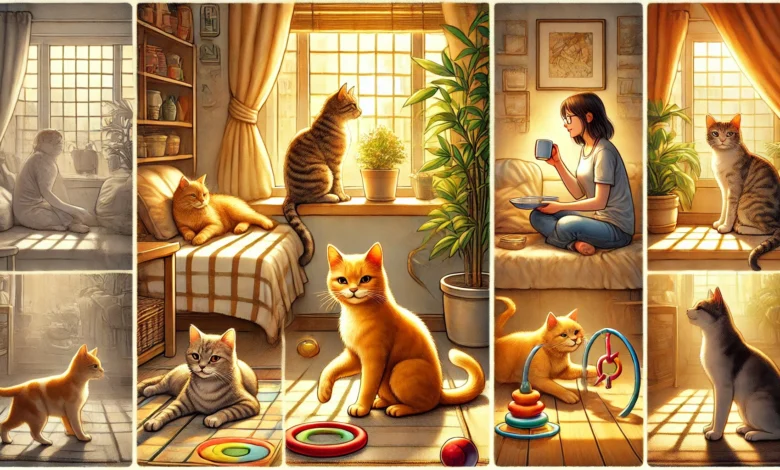
Probably, the most exciting and difficult time when adopting a cat is finding a feline friend whose personality will suit yours.
Cats have different personalities, ranging from calm and independent to playful and affectionate.
This article is crucial for understanding different cat personalities so that you can get a pet that will best fit your lifestyle and home.
Understanding how to evaluate cat personalities will better equip you for your choice, whether it’s a cuddly cat or one that is okay with being left alone with minimal attention.
Let’s explore the captivating world of cat personalities and learn how to find your perfect match.
Table of Contents
Understanding Cat Personalities: What Makes Each Cat Unique
Every cat has a unique personality shaped by genetics, breed characteristics, and life experiences.
Just like humans, no two cats are alike.
While some cats are bold and outgoing, others may be more reserved or shy.
This distinction becomes important during the adoption process, as these traits will influence how a cat relates to you, other pets, and its environment.
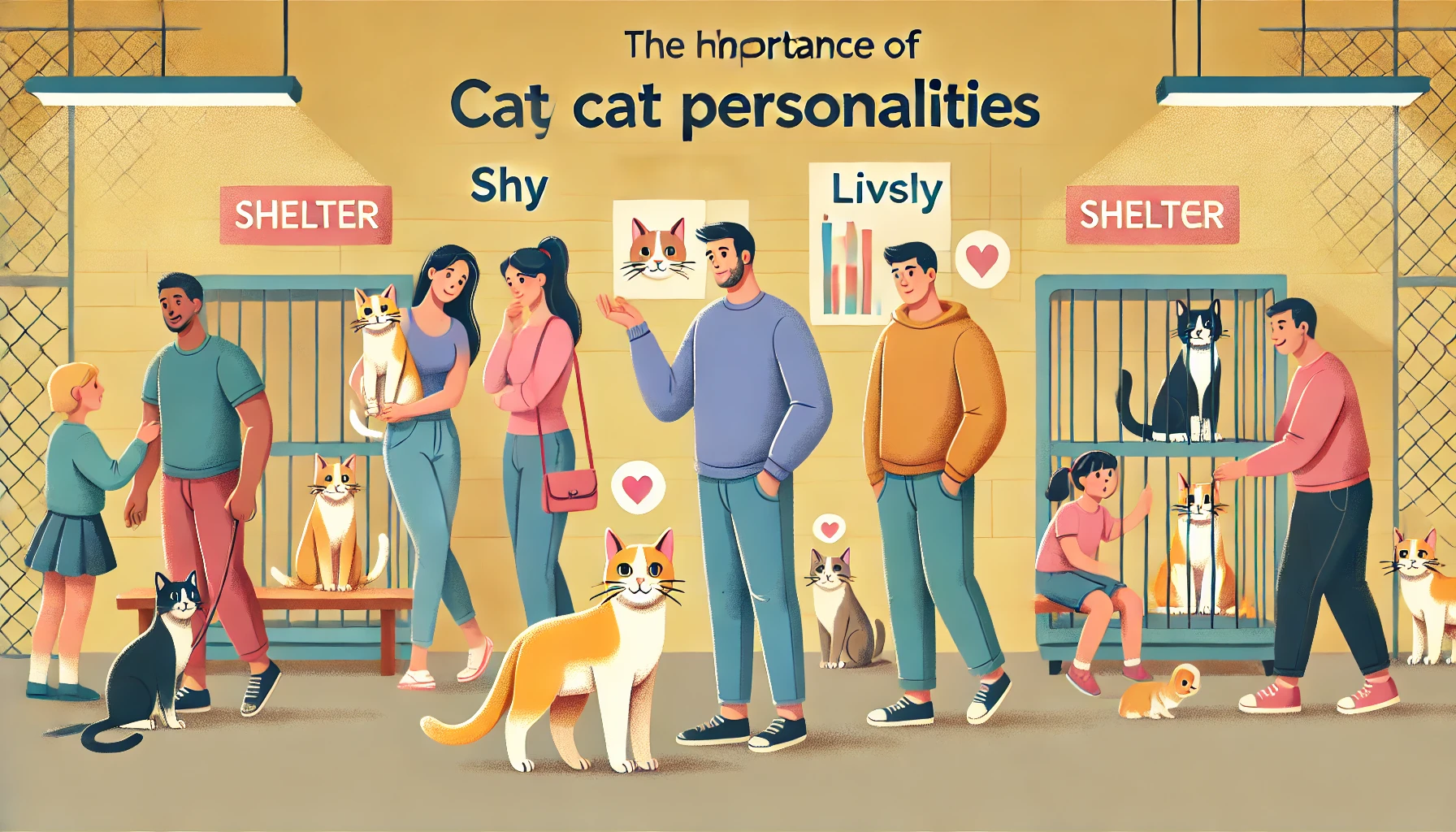
The Importance of Cat Personalities in the Adoption Process
Cat personalities play a major role in the adoption process since not every personality fits into every home.
For example, if you are the kind of person who likes to have a lively, interactive pet, an independent cat may not be the best fit.
On the other hand, a playful, energetic cat may not thrive in a quieter, more laid-back household.
By considering a cat’s personality during the adoption process, you’re more likely to ensure a long-term, happy relationship between you and your new furry friend.
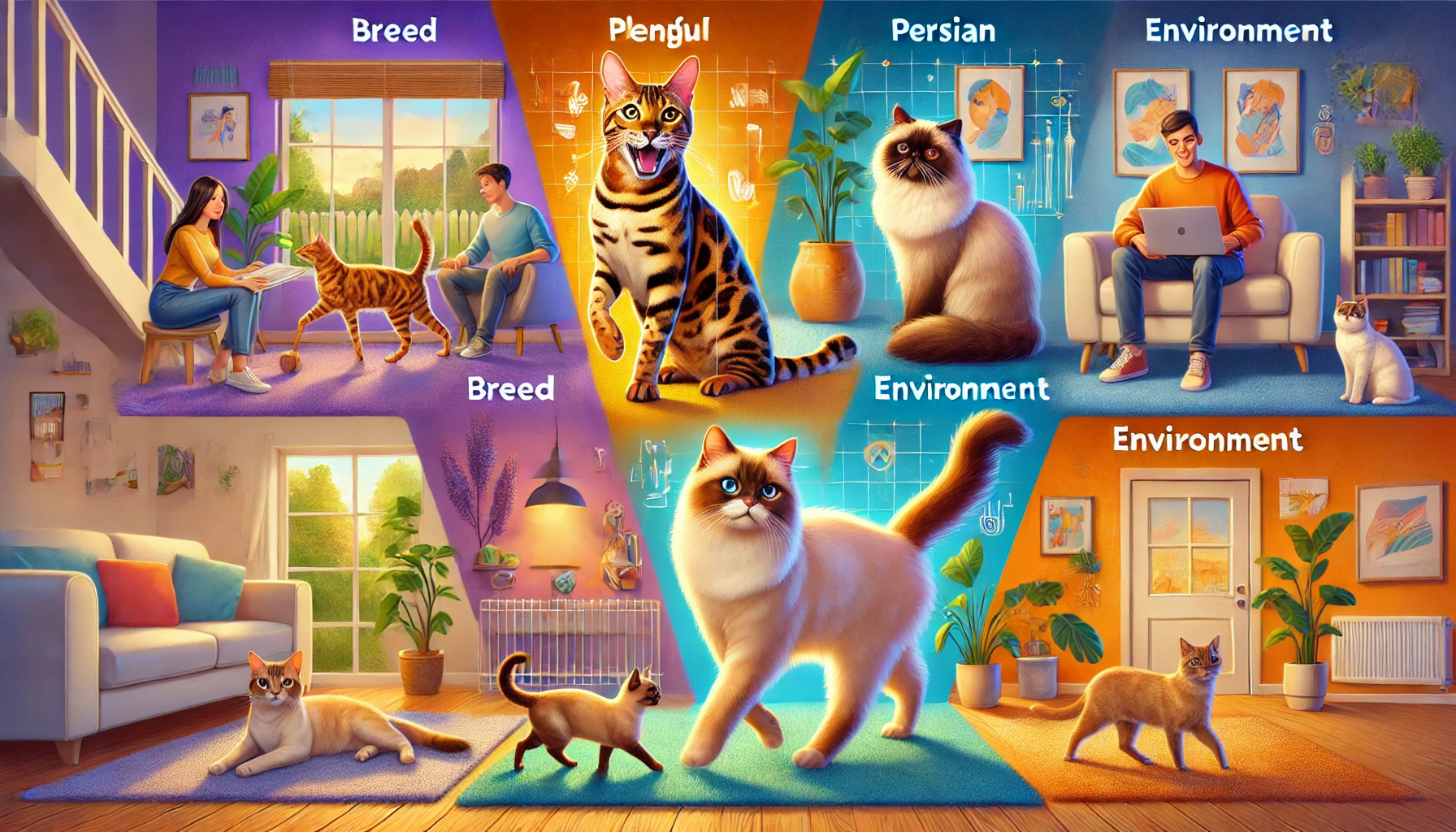
How Cat Personalities Are Shaped by Breed and Environment
Although every cat is different, certain breeds tend to have specific personality traits.
For instance, many Siamese cats are extremely vocal and outgoing, while Persians are typically easygoing and affectionate.
However, a cat’s environment can also be a critical factor in shaping its personality.
Cats raised in loving, social environments often display more confident behaviors, while those subjected to neglect or stress may exhibit more fearful or reserved personalities.
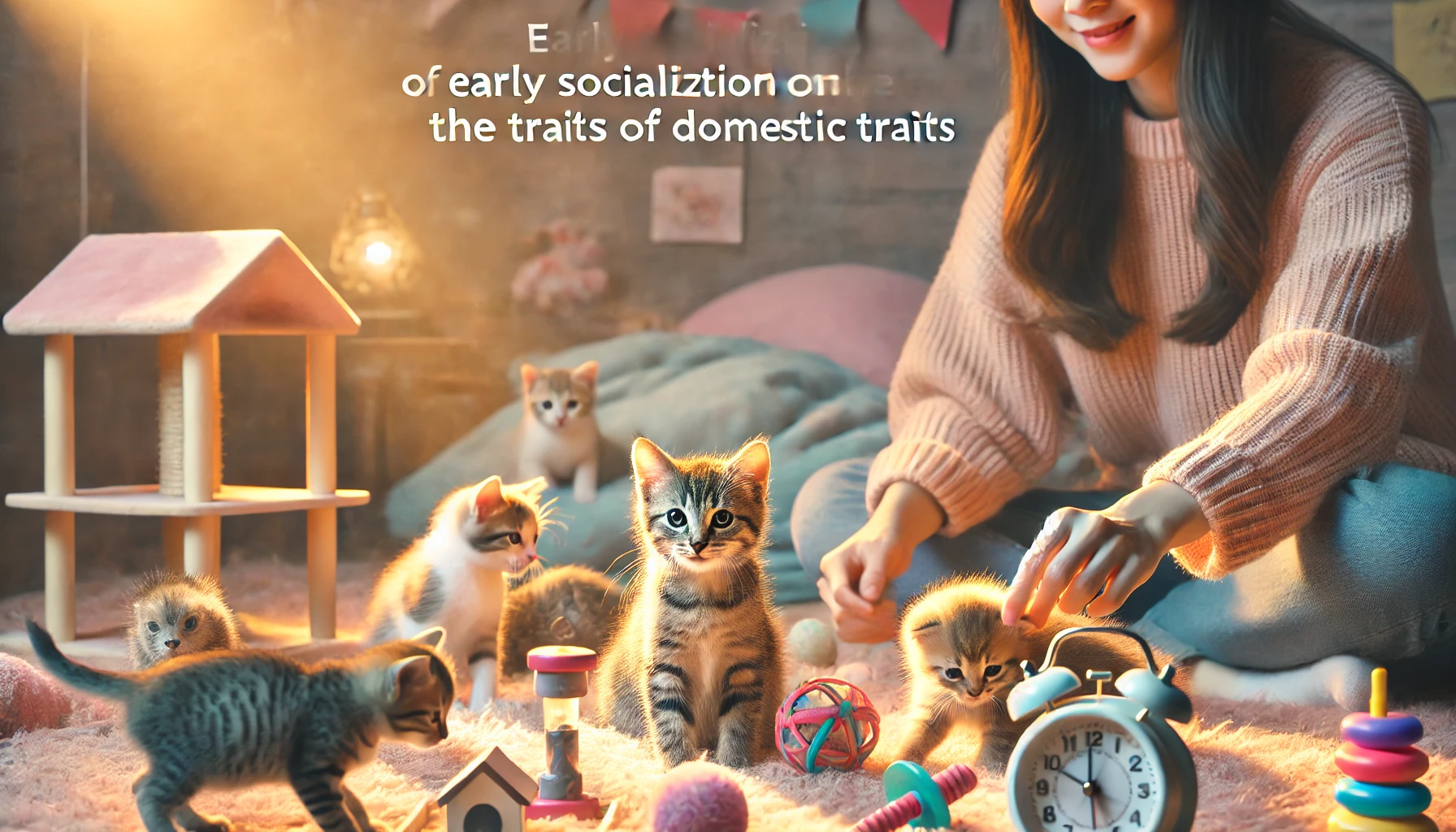
The Influence of Early Socialization on the Traits of Domestic Cats
Socialization during a kitten’s early weeks plays a crucial role in shaping its personality.
Cats exposed to different people, sounds, and environments while young tend to be more adaptable and friendly.
In contrast, inadequately socialized kittens may grow up to be excessively fearful or suspicious.
When adopting a cat, it is important to consider its developmental background, as this can have a lasting impact on its personality.
Understanding how a cat’s genetics, breed, and environment shape its personality is crucial in selecting the right companion for your home.
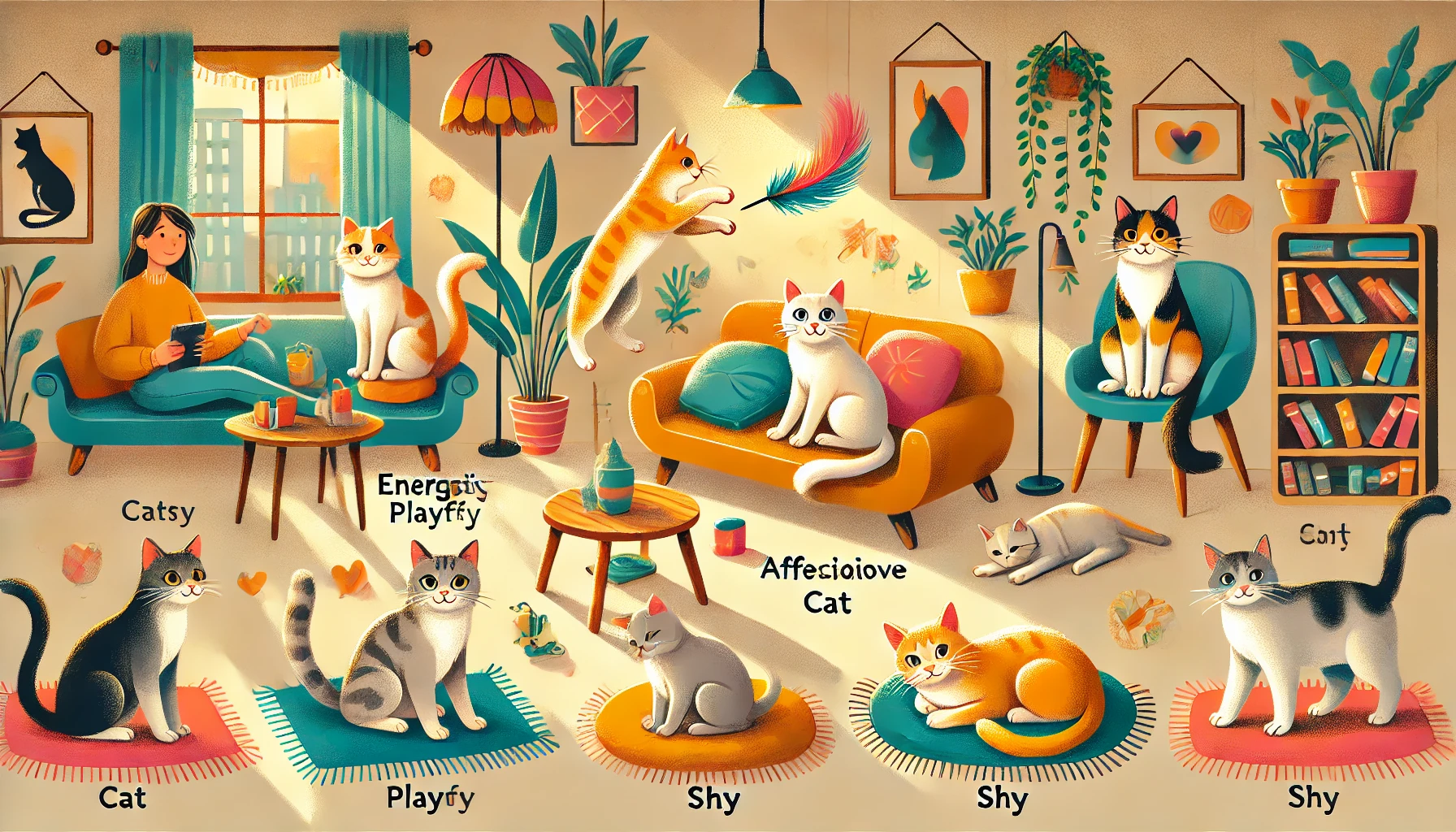
Common Cat Personality Types: Which One Suits You?
Just like people, cats have a wide variety of personalities, and finding the right one makes all the difference in the adoption experience.
Cat personalities range from independent to playful, and understanding these common personality types can help you find a cat that will thrive in your home and fit your lifestyle.
Let’s delve deeper into the most common cat personality types and what makes each one special.
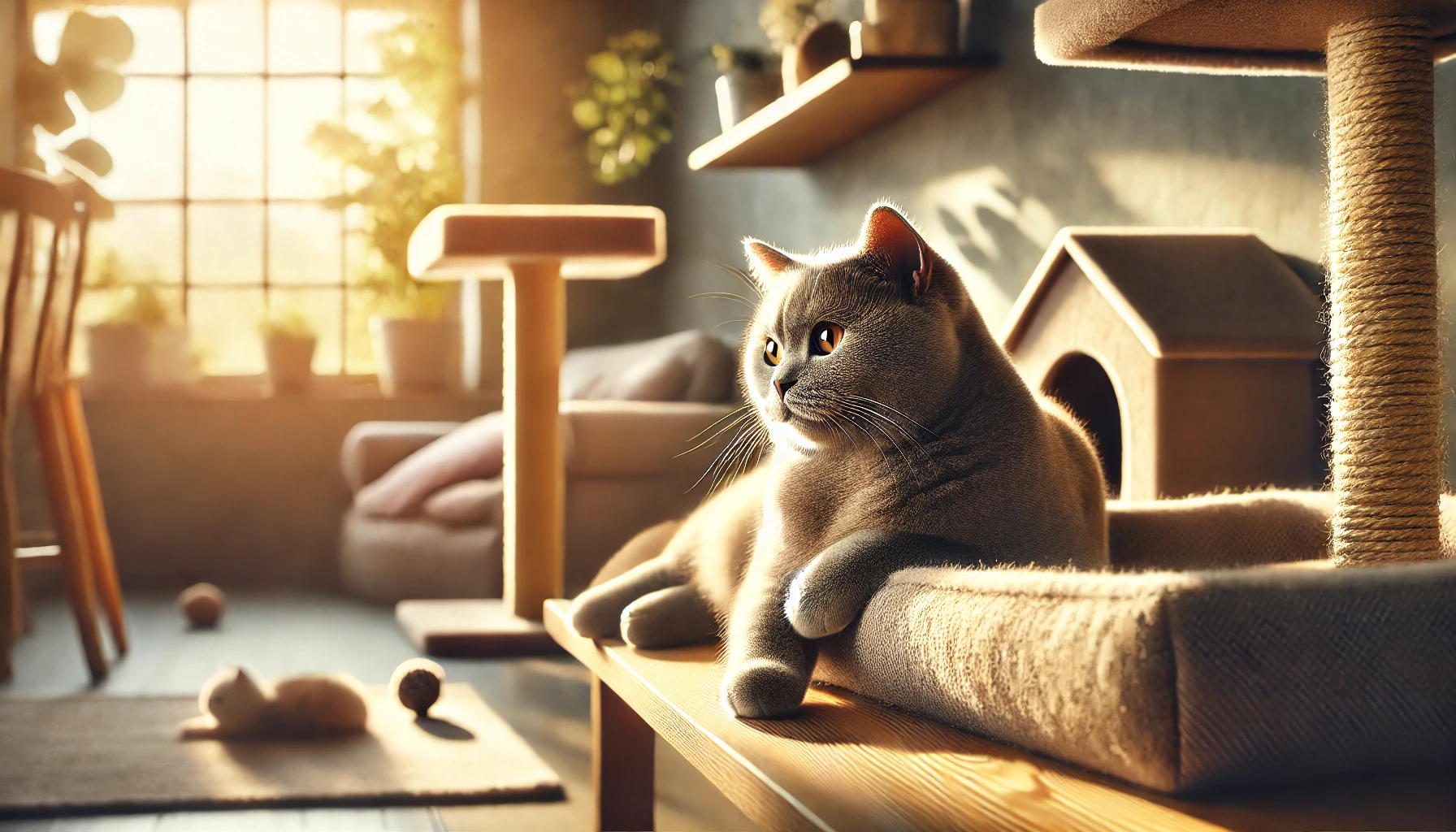
Independent Cats: For Low-Maintenance Owners
If you have a busy lifestyle, an independent cat might be exactly what you need.
These cats are more self-reliant and don’t necessarily need constant attention.
Independent cats enjoy being left to their own activities, such as exploring their surroundings or simply lounging without the need for interaction.
While they may enjoy occasional affection, they don’t depend on it to feel at ease.
These traits make them a great choice for individuals who want companionship but have limited time for daily play or cuddles.
- Characteristics: Happy to be left alone, inquisitive, self-reliant.
- Best suited for: Busy professionals or families with limited time for interaction.
- Example Breeds: British Shorthair, Russian Blue.
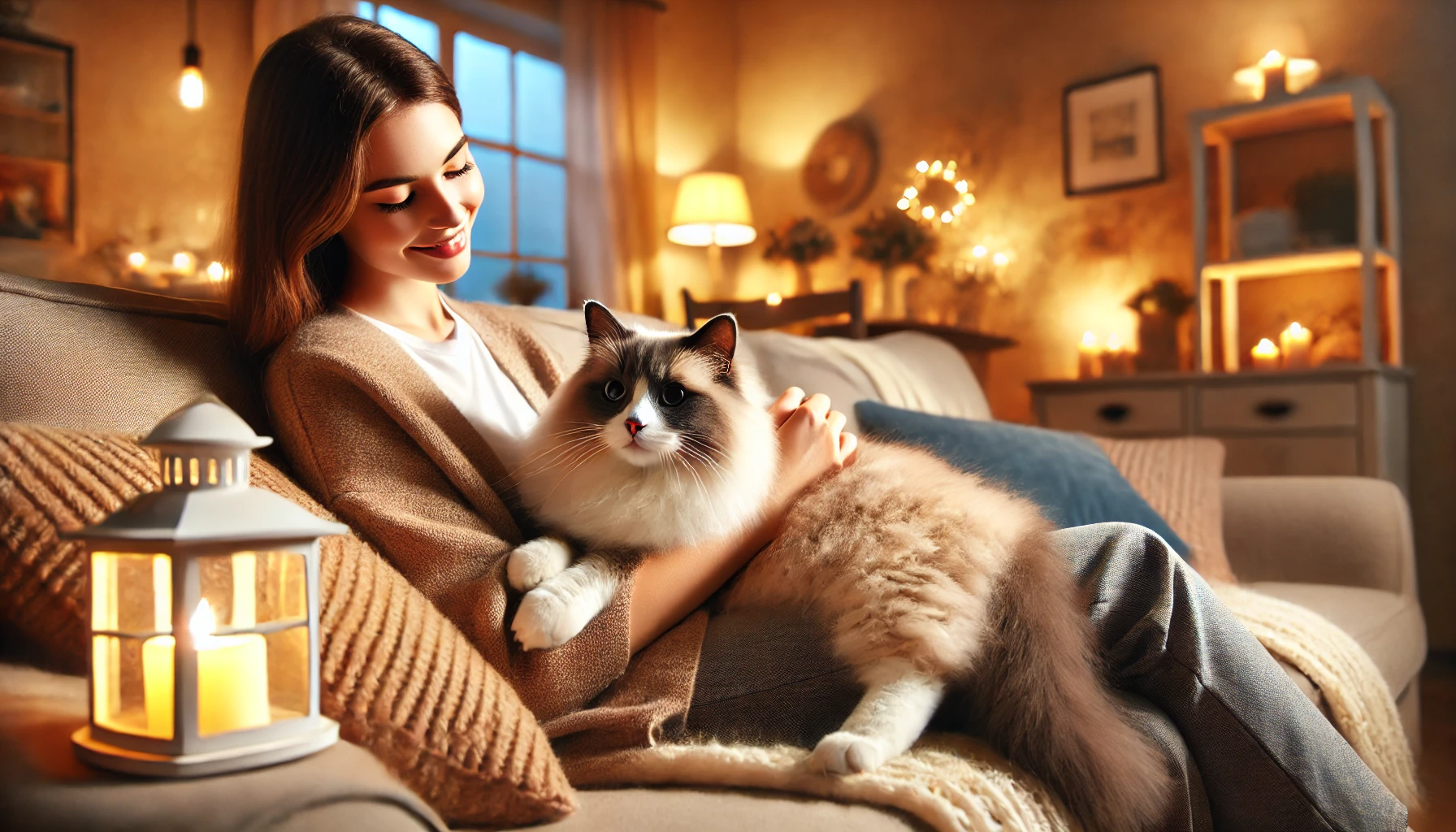
Affectionate Cats: Ideal for Companionship
If you’re looking for a cuddly companion, affectionate cats are perfect for you.
These cats love your company and will follow you around the house.
They enjoy being petted, snuggled, and may even sit on your lap.
Affectionate cats form strong bonds with their owners and are always ready for some snuggle time.
If you value close companionship, this type of cat will bring you endless joy.
- Characteristics: Loving, tactile, strongly attached to their owners.
- Best suited for: Owners who enjoy a cat that seeks affection and closeness.
- Example Breeds: Ragdoll, Burmese, Scottish Fold.

Playful Cats: Energetic and Entertaining
Playful cats are the entertainers of the feline world.
Full of energy and curiosity, they love engaging in games, chasing toys, and exploring new spaces.
If you enjoy spending time playing with your pets, a playful cat will keep you entertained.
These cats often have high energy levels and may get bored if left alone for long periods, so they are best suited for households that can provide regular stimulation and attention.
- Characteristics: Energetic, loves to play, curious about their surroundings.
- Best suited for: Active households that enjoy interactive play.
- Example Breeds: Bengal, Abyssinian, Siamese.
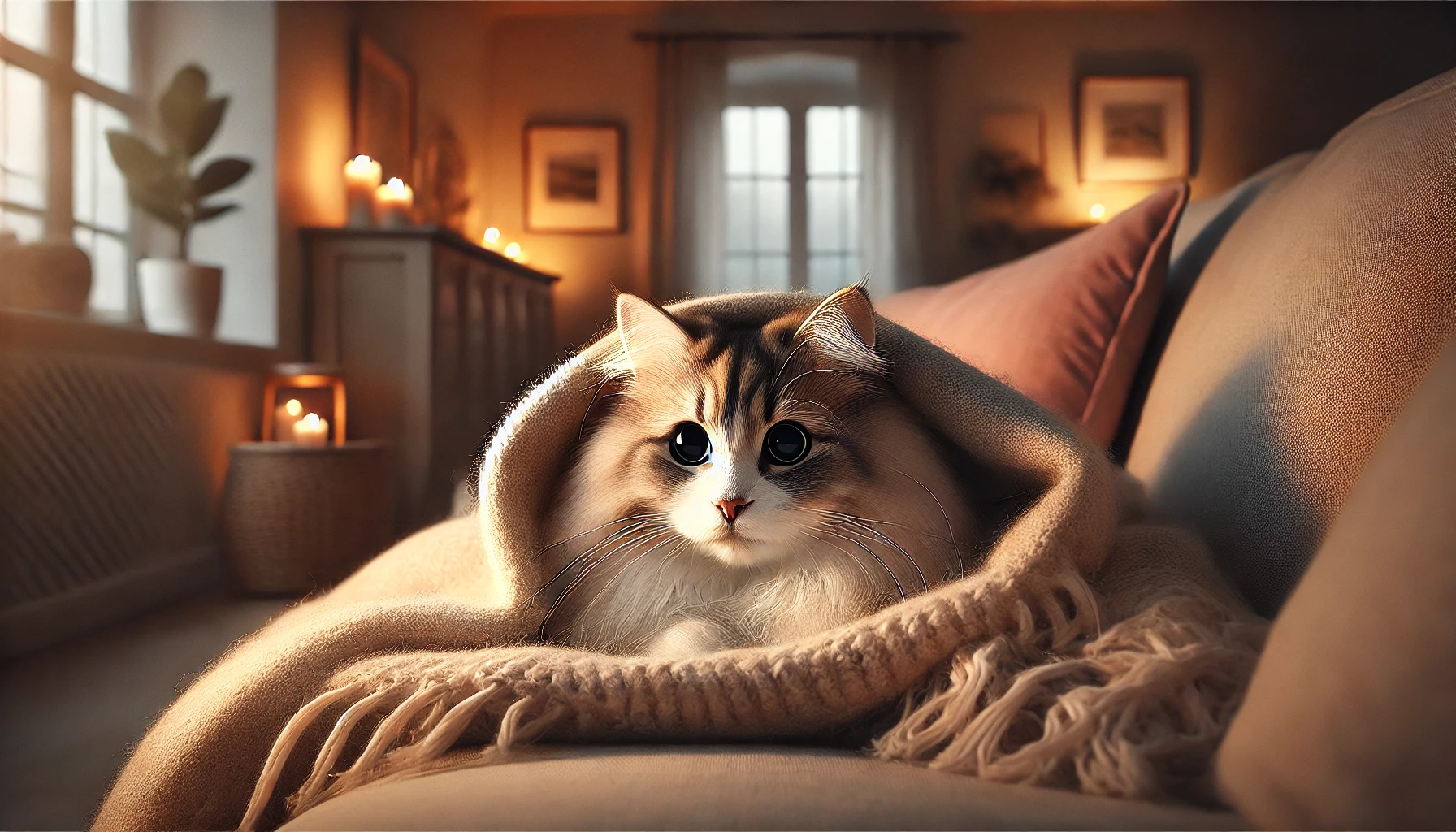
Shy Cats: Understanding Their Timid Nature
Shy cats tend to be more reserved and may take time to adjust to new people and environments.
These cats require patience from their owners, as they are easily startled by changes and unfamiliar situations.
While shy cats may not seek attention as readily, they can form deep bonds with those who are gentle and respectful of their boundaries.
Shy cats are ideal for quiet homes where they can feel safe and gradually build trust.
- Characteristics: Timid, sensitive to changes, requires patience and a calm environment.
- Best suited for: Quiet homes where the cat can feel safe and build confidence over time.
- Example Breeds: Norwegian Forest Cat, Chartreux.
Choosing the right cat personality for your lifestyle is essential to ensure a positive adoption experience.
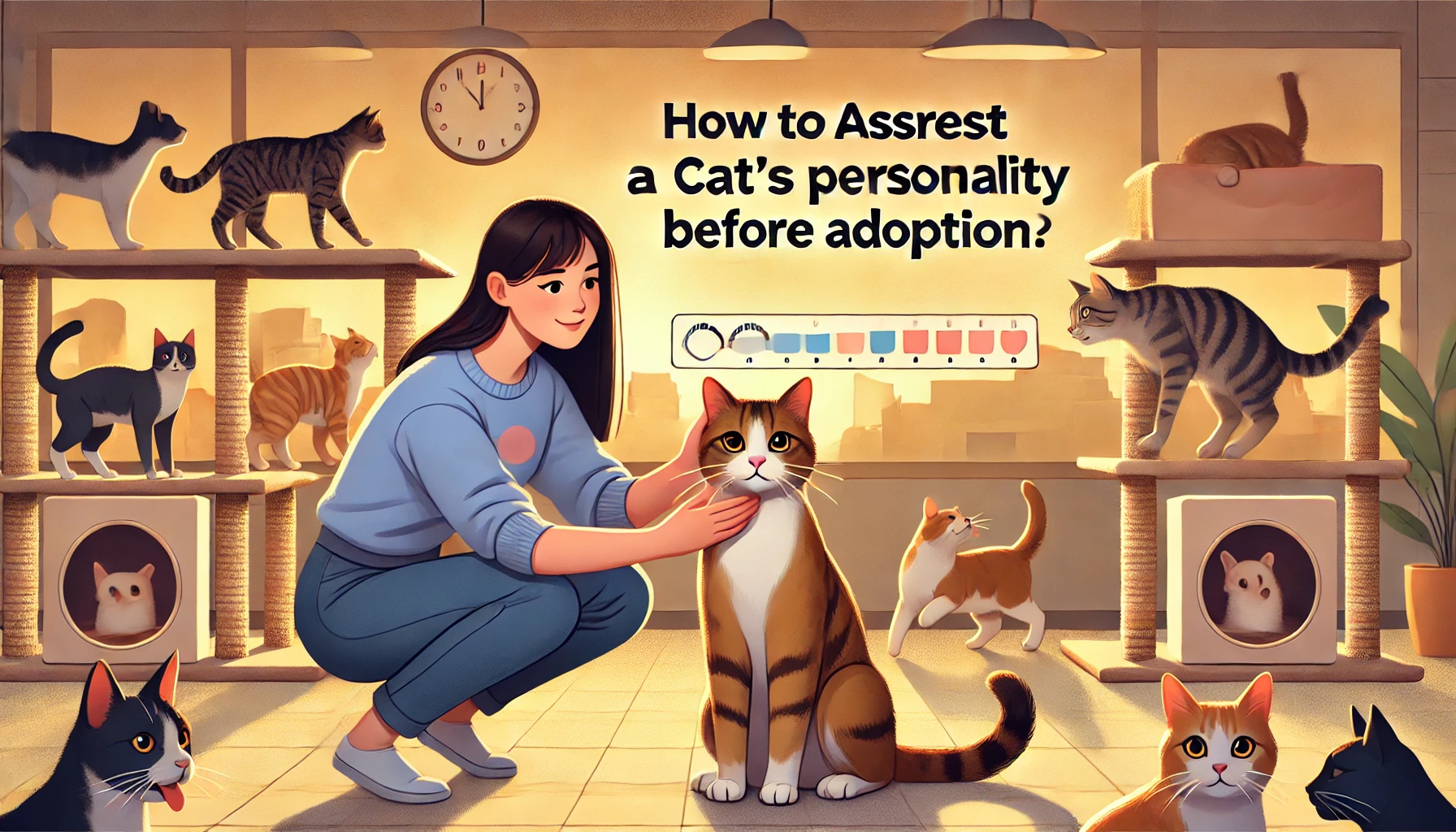
How to Assess a Cat’s Personality Before Adoption
When you adopt a cat, it is crucial to assess its personality to ensure that it will be the perfect match for your home and lifestyle.
Every cat is different, and knowing how a cat is likely to behave before bringing it into your home will give you a much better idea of whether it will be a proper fit.
While shelters and rescues can provide some insight into a cat’s personality, there are a variety of things you can look for to gain a better understanding.

Behavioral Cues to Watch Out For in Cats
A lot can be learned about a cat’s personality when you first meet it by observing its body language and behavior.
Does the cat approach you with interest, or does it stay away?
Cats that are curious and laid-back tend to be outgoing and friendly, while cats that shy away or hide may be more reserved or fearful.
Here are some important behavioral cues to look for:
- Body postures: A cat that is relaxed, with its tail up, usually indicates confidence and comfort, while crouching or hiding may suggest fear or anxiety.
- Vocalization: Some cats are more vocal than others. A vocal cat may be seeking attention or trying to communicate with you.
- Interaction: Pay attention to how the cat reacts when being petted or played with. Some cats love being stroked and may lean against you or nuzzle, while others may not enjoy as much physical contact.
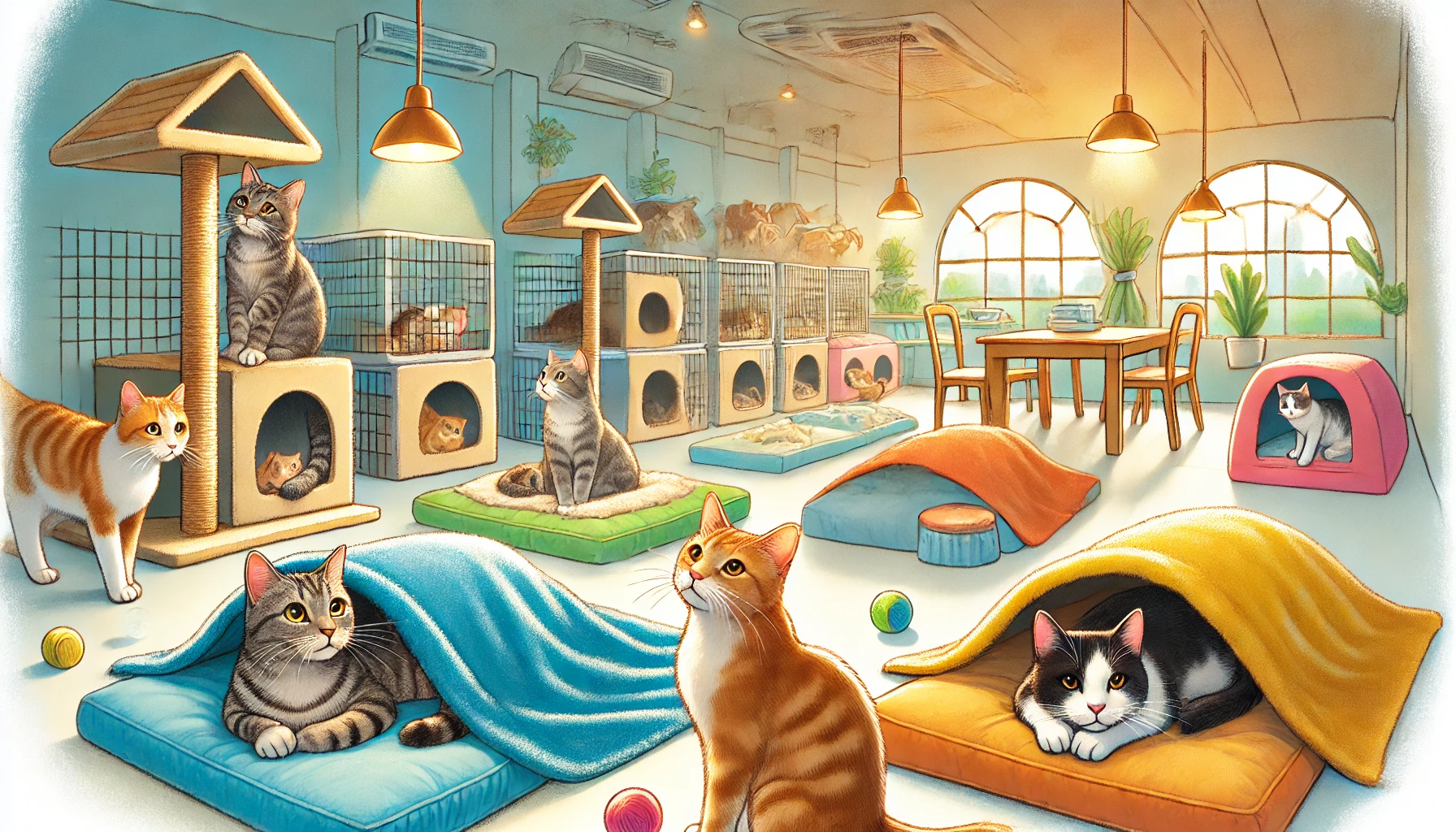
How Shelter Environment Affects Cat Behavior
It’s important to remember that sometimes a shelter environment can obscure a cat’s true personality.
The stress of being in a new place with other animals can make some cats act more fearful than they would in a home environment.
Shelter cats may not show their playful or affectionate sides until they feel more secure.
Spending time with a cat in a quieter space outside of its cage often reveals its more natural personality traits.
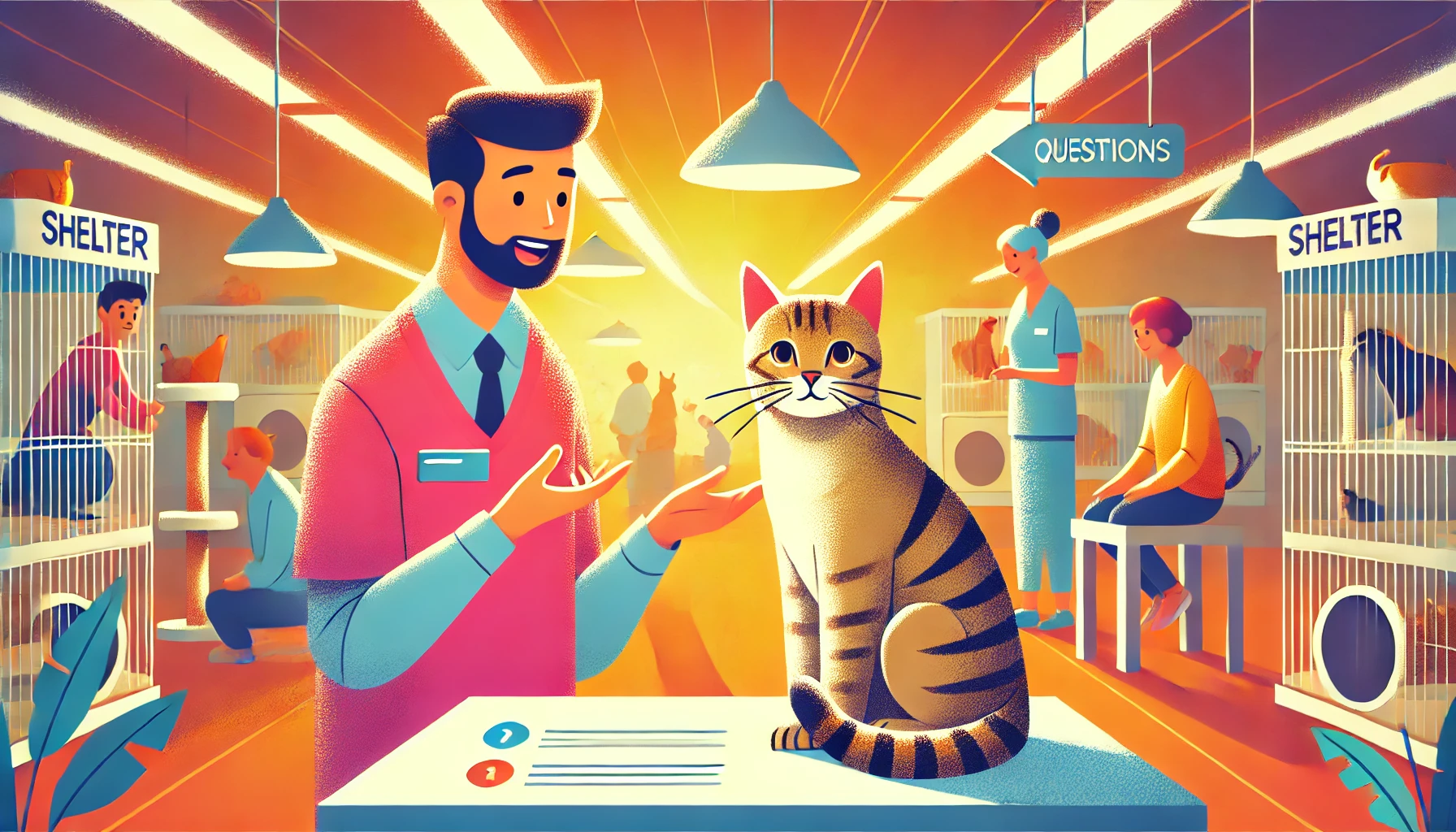
Ask the Right Questions When Meeting a Cat
When adopting from a shelter or rescue, asking the right questions can make a significant difference in understanding the cat’s personality.
Inquire about the cat’s background, behavior at the shelter, and how it interacts with staff and volunteers.
Some key questions to ask include:
- Does the cat get along well with other animals?
- How does the cat behave around children or strangers?
- Has the cat shown any particular preferences for toys or activities?
- Is the cat known to have any fears or anxieties?
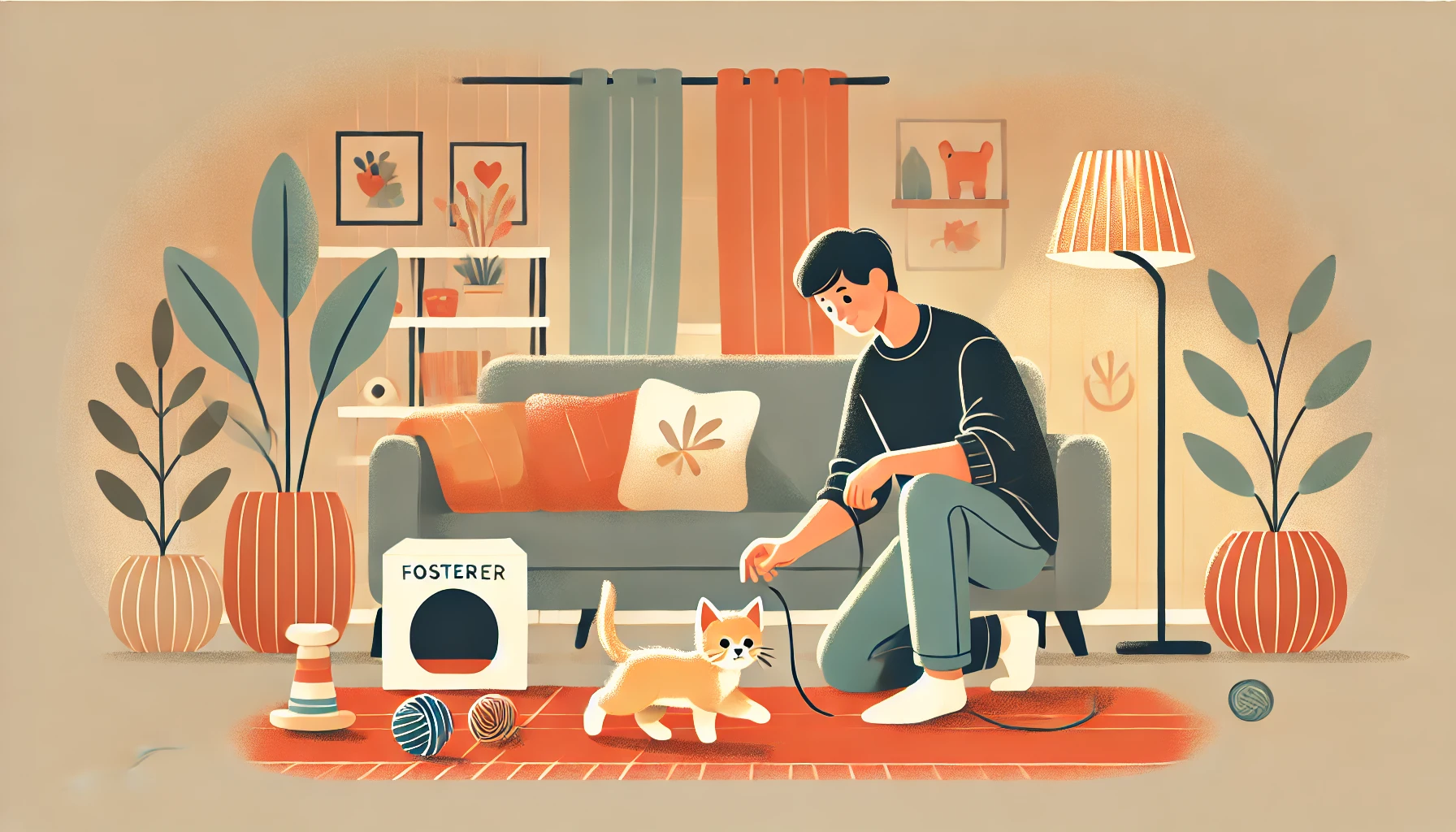
Using Fostering as a Means to Learn More About a Cat’s Personality
If you’re unsure about a cat’s personality or how it might fit into your home, fostering can be a great option.
Fostering allows you to observe how a cat behaves in a home setting without the long-term commitment of adoption.
This experience can give you a deeper understanding of the cat’s needs and whether it would be a good fit for your lifestyle.
Many shelters and rescues offer fostering programs, making it an excellent way to get to know a cat before making a final decision.
Carefully observing a cat’s behavior can reveal important clues about its personality, helping you make the best choice for your home.

Picking the Purr-fect Cat: Personalities to Match Your Lifestyle
As much as one may want a cat for its looks, personality plays an important role in selecting the right cat.
Cats have different temperaments, and finding one that fits into your daily routine and surroundings is key to a successful adoption.
Let’s explore how various cat personalities can align with different lifestyles to help you make the best choice for your home.
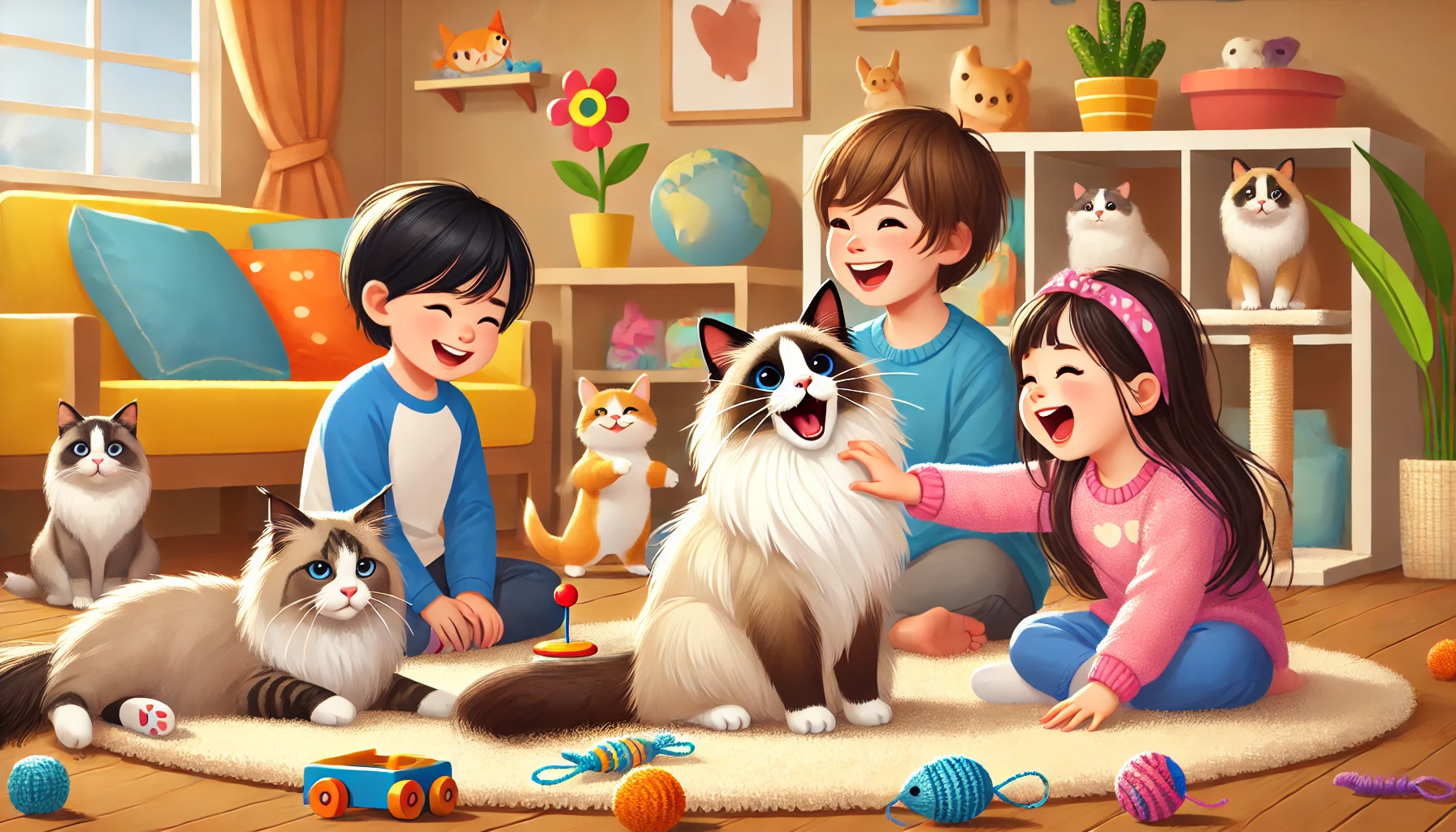
Best Cat Personality Types to Consider for Families with Kids
Families with children need a cat that is both patient and tolerant.
Only calm and affectionate cats can handle the energy and excitement of a busy household.
Cats that are friendly, open to being handled, and enjoy interacting with people are ideal for families.
Generally, breeds known to be gentle and social are better suited for homes with children.
- Ideal Characteristics: Affectionate, patient, playful yet gentle.
- Best Breeds: Ragdoll, Maine Coon, Birman.
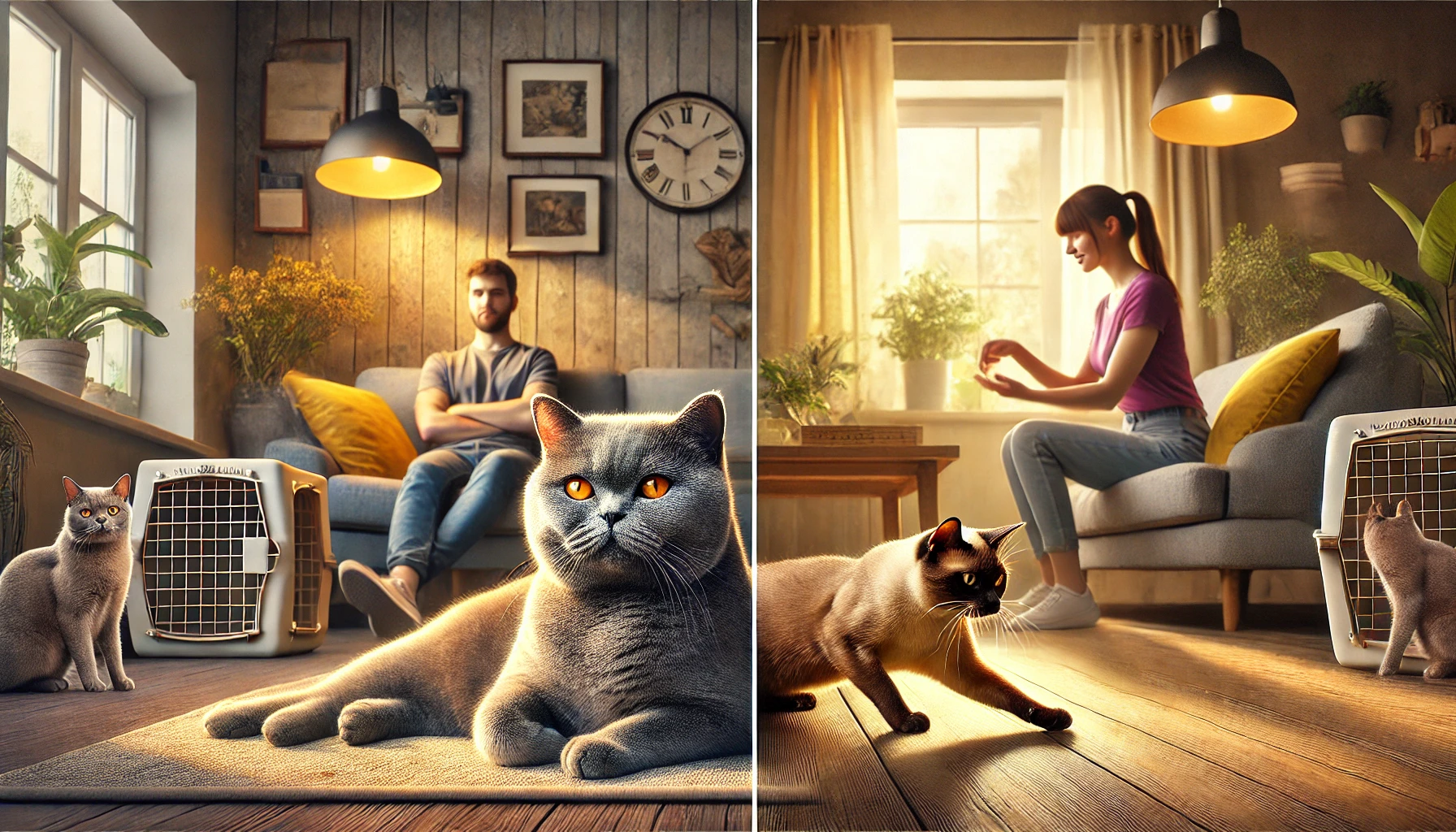
Cats for Busy Professionals: Independent vs. Social Cats
Busy professionals often prefer cats that are more independent, as these cats are content spending time alone while their owner is at work.
Independent cats don’t require constant attention and will entertain themselves throughout the day.
However, if you’re looking for a more social cat that enjoys interaction but can adapt to occasional solitude, a different breed may suit you better.
- Ideal Characteristics of Independent Cats: Low-maintenance, self-sufficient, enjoys alone time.
- Best Breeds for Independent Cats: British Shorthair, Russian Blue.
- Ideal Characteristics of Social Cats: Friendly, loves interaction but can adapt to periods of solitude.
- Best Breeds for Social Cats: Scottish Fold, Burmese.
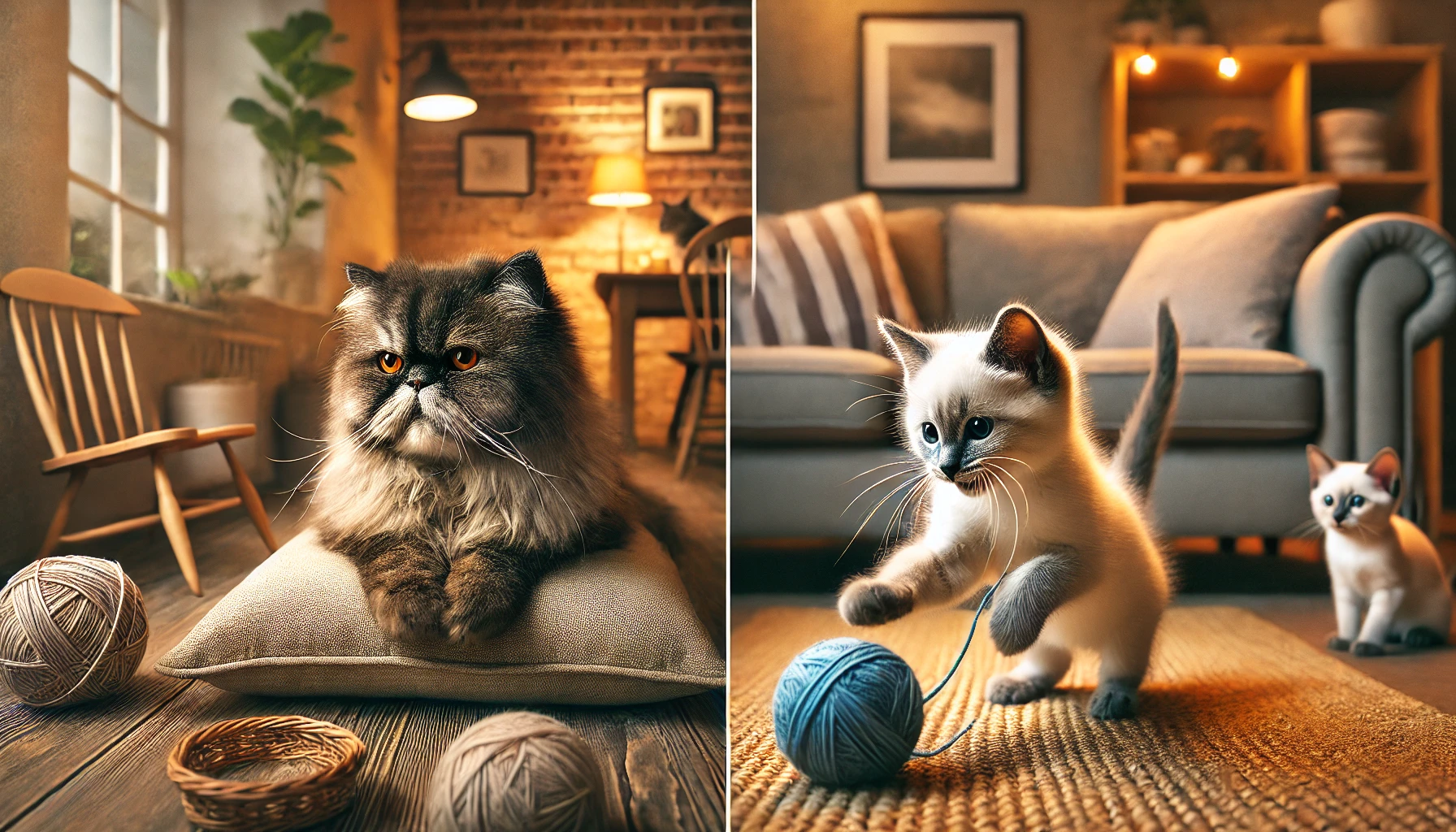
Senior Cats vs. Kittens: Personality Considerations
When deciding between adopting a senior cat or a kitten, personality considerations are essential.
Kittens are typically energetic, playful, and curious, which can be fun but requires more attention and care.
Senior cats, however, tend to have more established, calm personalities, making them less demanding.
If you enjoy the playful chaos of youth, a kitten may be for you, while a senior cat is ideal for someone seeking a low-energy companion.
- Ideal Characteristics in Kittens: Lively, playful, inquisitive.
- Ideal Characteristics in Senior Cats: Quiet, low-energy, affectionate.
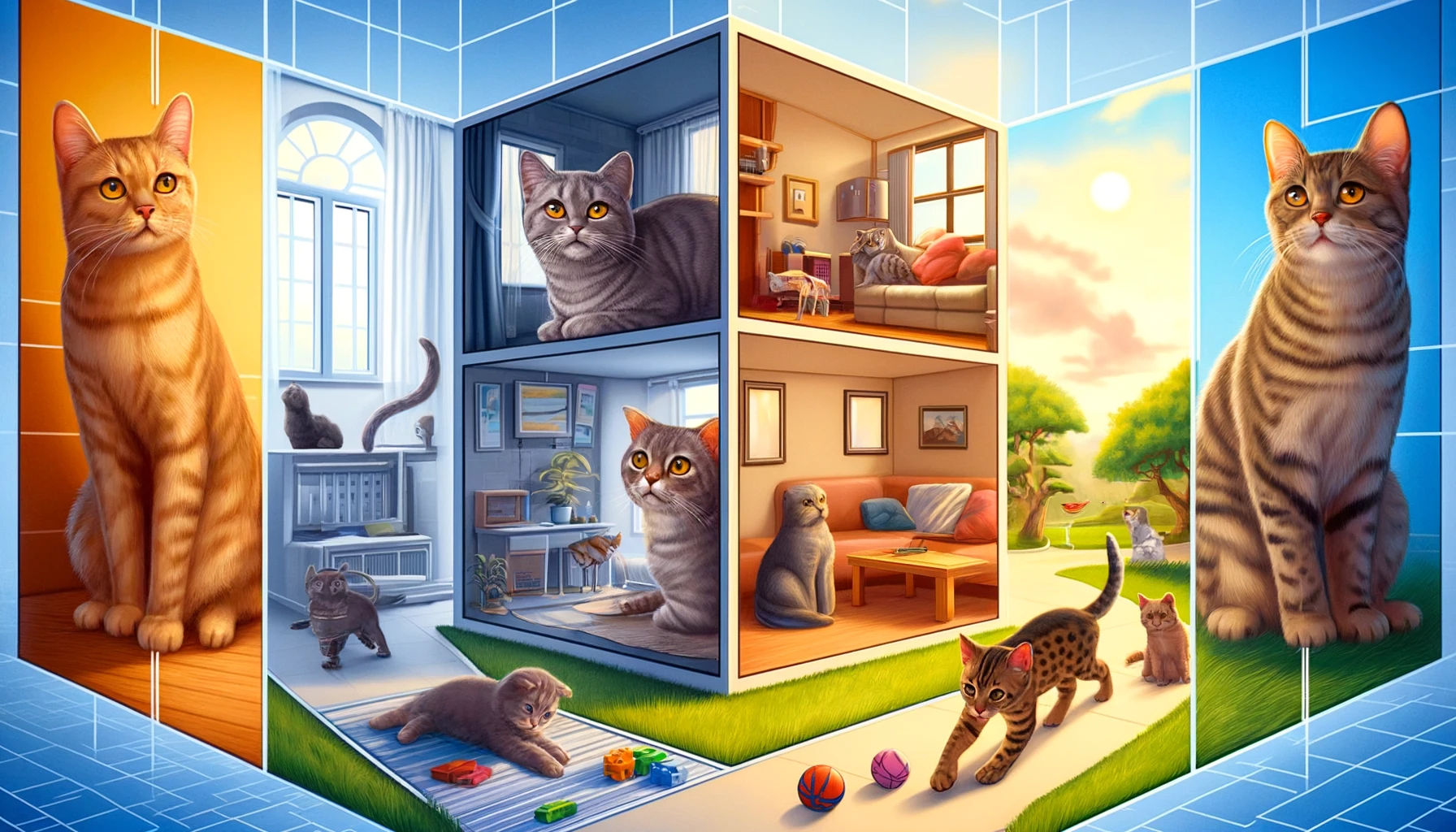
Choosing a Cat Based on Your Living Environment
Your living environment plays a big role in determining which cat personality is best for you.
For instance, if you live in a small apartment, a cat that doesn’t need much space to run or is content with indoor living is ideal.
Conversely, a more active cat might be suitable for a larger home where there’s more space to explore.
Other factors, like having other pets or frequent visitors, can also impact which cat will best fit into your home.
- Small Apartment: A low-energy, indoor-loving cat is ideal.
- Large Home: Active, playful cats that love to explore and need room to roam.
- Multi-Pet Household: Cats that are friendly and get along well with other animals.
Matching a cat’s personality with your lifestyle will result in a fulfilling relationship for both you and your feline friend.
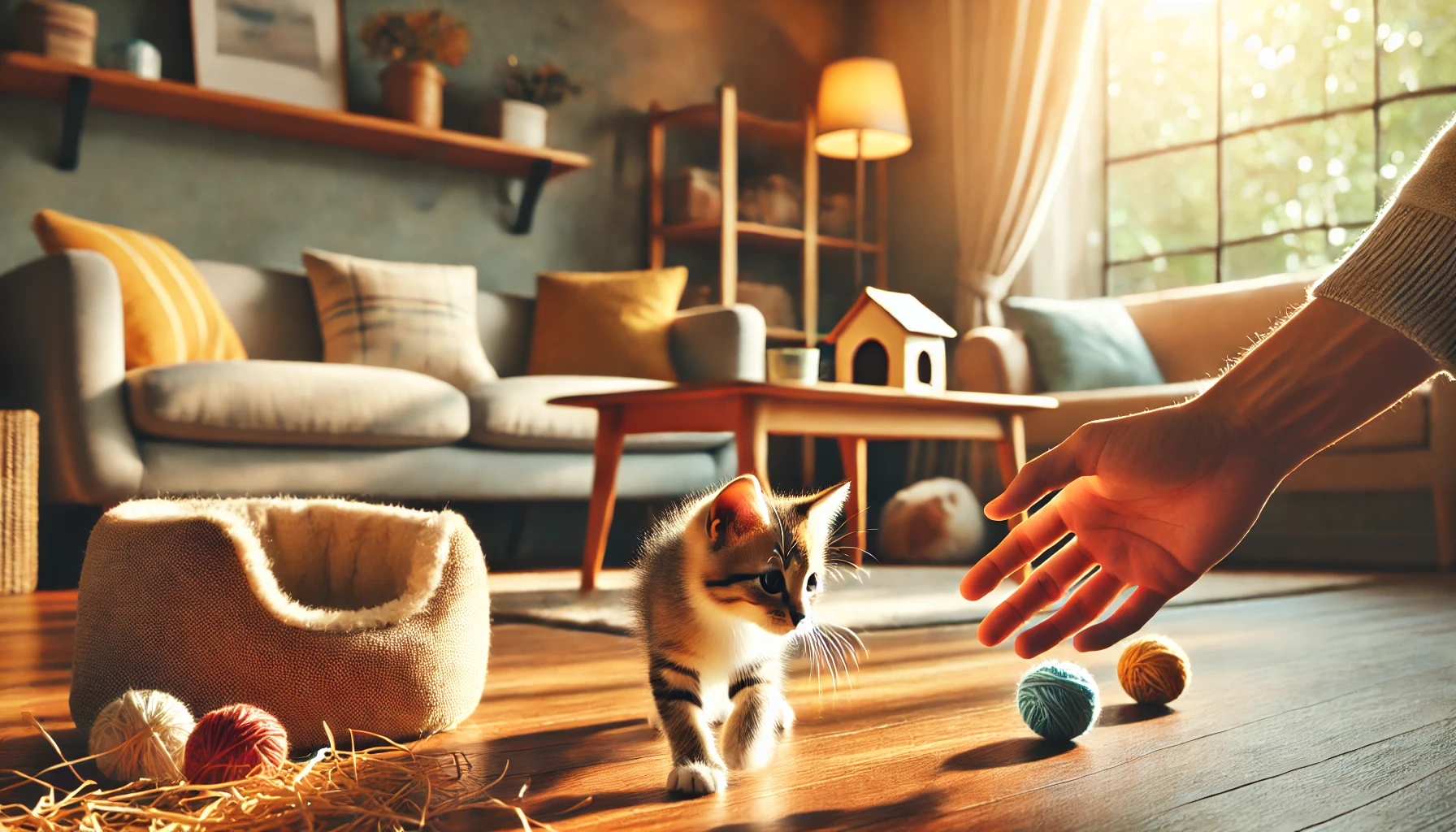
Helping Your New Cat Adjust to Their New Home
Bringing a new cat home is exciting; however, the transition can be stressful for your new feline friend.
Cats are creatures of habit, and sudden changes in their environment can be overwhelming.
Preparing a welcoming space in your home for your new cat can help them feel secure and comfortable.
Here’s how you can ensure your new cat adjusts smoothly to their new surroundings.

Creating a Comfortable, Safe Space for Your Cat
One of the most important things when bringing a new cat home is to create a comfortable and safe space.
Designate a quiet area in your house where your cat can retreat if they feel overwhelmed.
This space should have all the essentials, such as a litter box, food, water, and a cozy place to sleep.
Including familiar items, like toys or blankets, can also help your cat feel more secure in their new environment.
- Your Cat’s Safe Space Essentials: Litter box, food and water bowls, bed, familiar toys.
- Location: Choose a quiet spot in your home with minimal traffic to ensure your cat feels safe and secure.
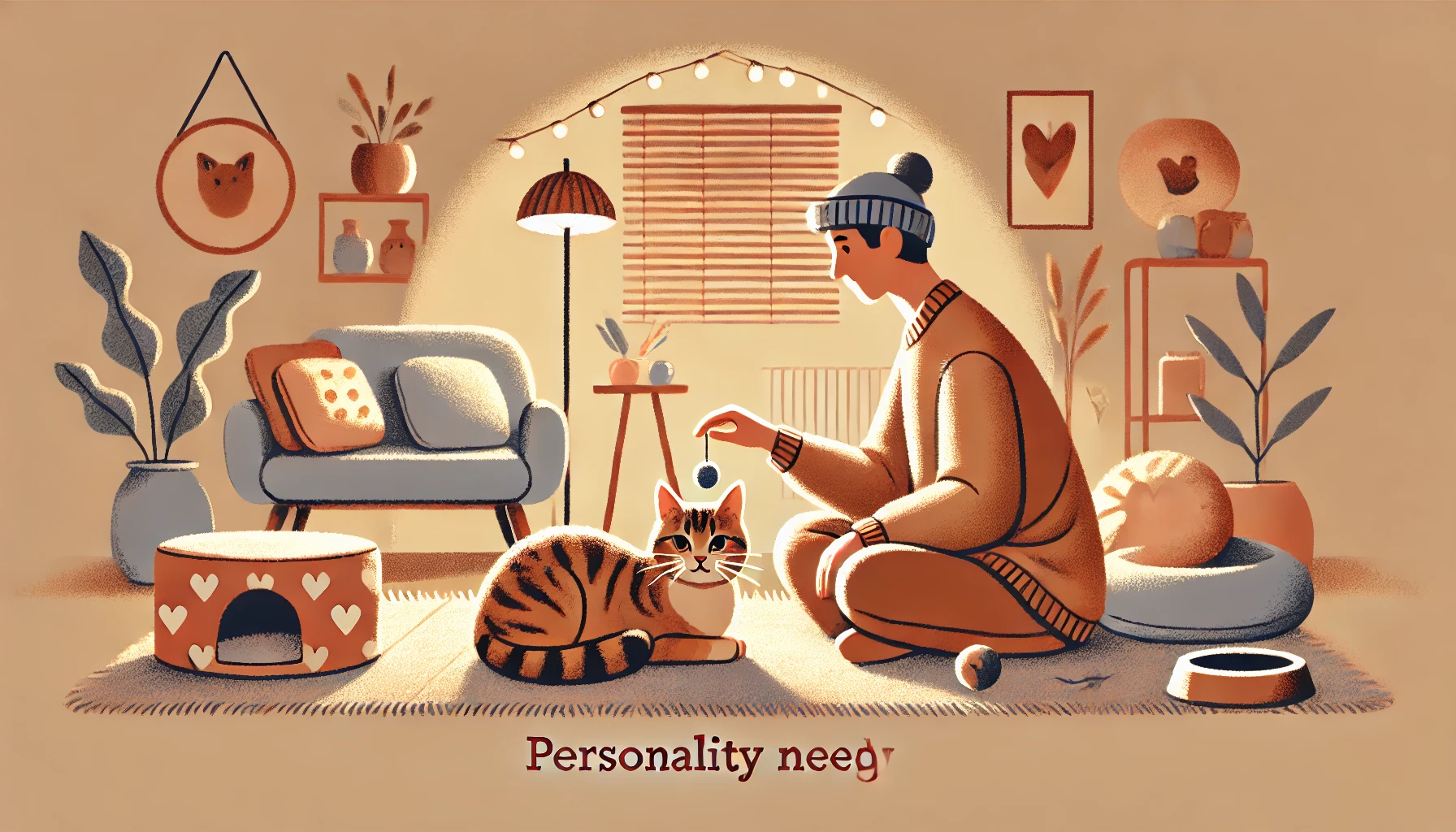
Understanding and Respecting Your Cat’s Personality Needs
Every cat has a unique personality, and understanding your new cat’s specific needs can help them adjust more easily.
Some cats are outgoing and curious, while others are shy and prefer a slower pace.
Allow your cat to explore their new environment at their own pace and avoid overwhelming them with too much attention or new experiences.
Gradual introductions to different parts of your home, other family members, and pets will help them feel more comfortable.
- Tip: Let your cat come to you when they’re ready, rather than forcing interactions.
- Tip: Give your cat time to settle into their new home before introducing them to other pets or family members.
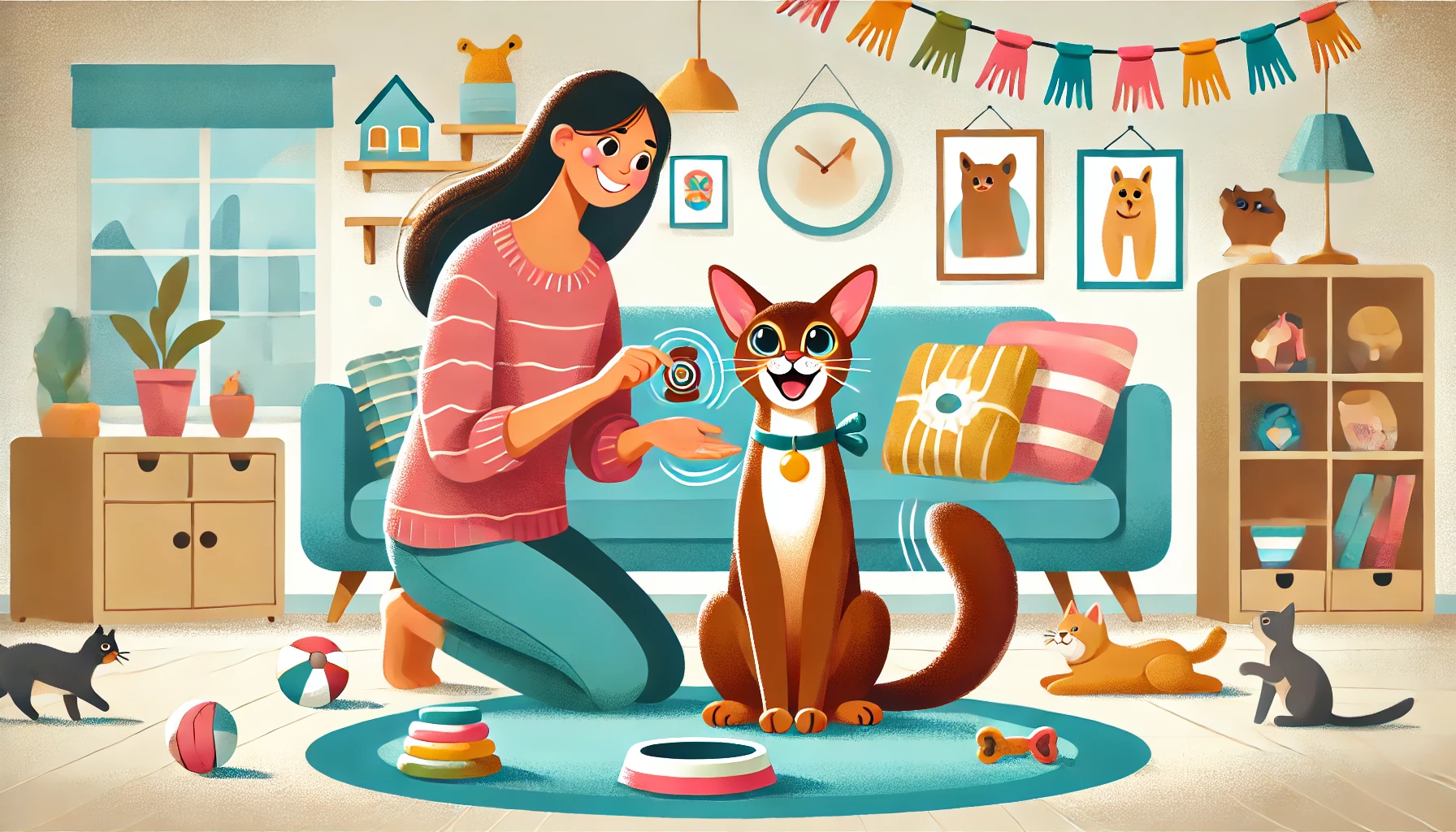
How to Encourage Positive Behavior in Cats
Encouraging positive behavior from your new cat early on helps them become well-adjusted members of your household.
Cats respond well to positive reinforcement, so reward them with treats, praise, or affection when they display good behavior.
For instance, if your cat uses the litter box or responds to their name, reinforce this behavior with a reward.
Avoid punishing your cat, as this can lead to stress and anxiety, making them fearful or withdrawn.
- Positive Reinforcement Techniques: Use treats, praise, or playtime to reward good behavior.
- Things to Avoid: Never punish or yell at your cat, as this creates negative associations and increases anxiety.
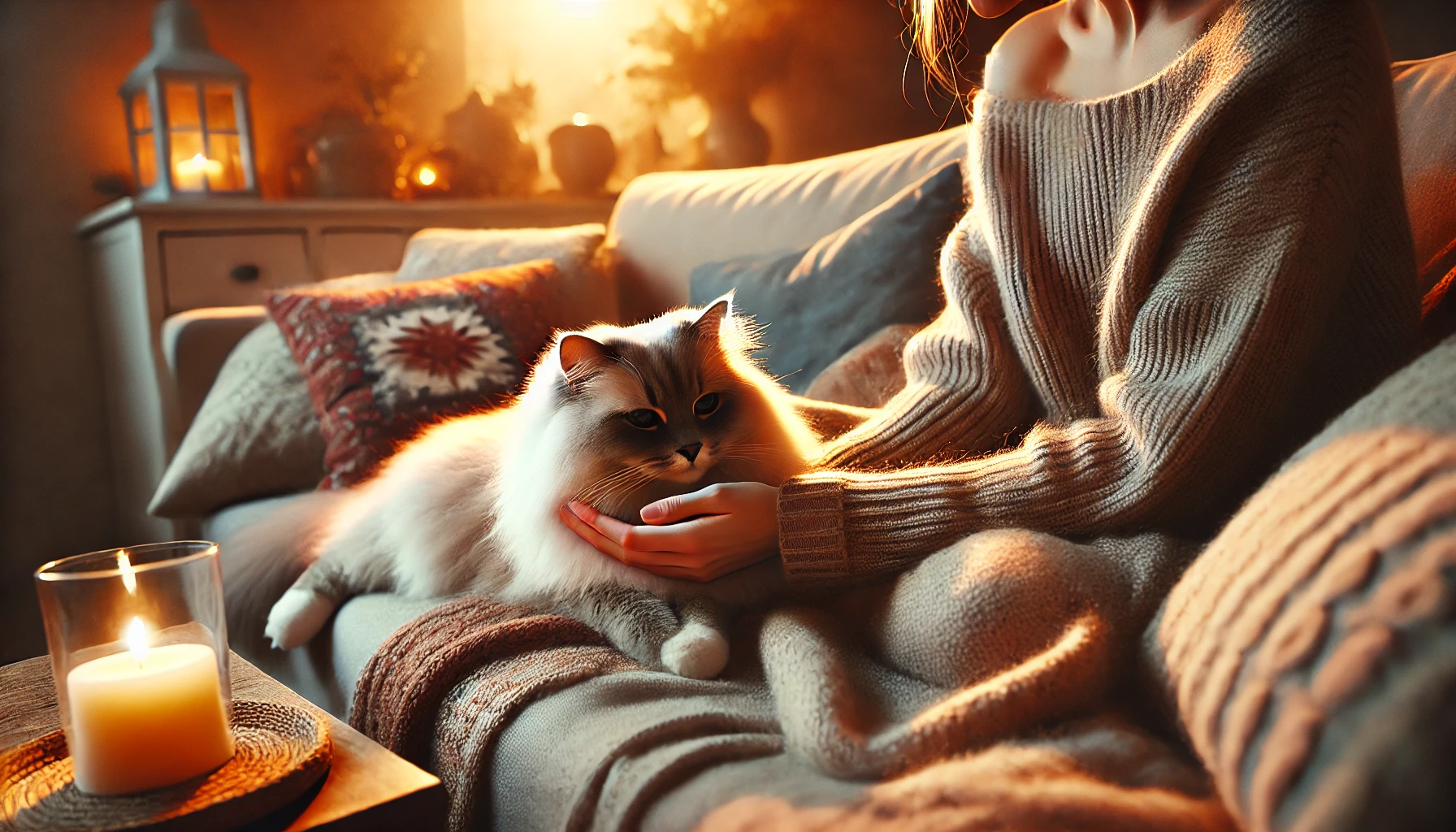
Bonding with Your Cat: Patience and Trust
Building trust and forming a strong bond with your new cat takes time and patience.
Consistency in your interactions and respecting your cat’s boundaries are key.
Some cats may take longer to warm up to their new family, while others adjust more quickly.
Regardless of the time it takes, through gentle interactions, play, and positive reinforcement, your cat will gradually learn to trust you, strengthening your bond over time.
- Key to Bonding: Spend quality time with your cat every day, whether through play, grooming, or just being nearby.
- Respecting Boundaries: Allow your cat to approach you and initiate contact when they feel comfortable.
Creating a safe, welcoming space for your new cat is essential for a smooth transition into your home.
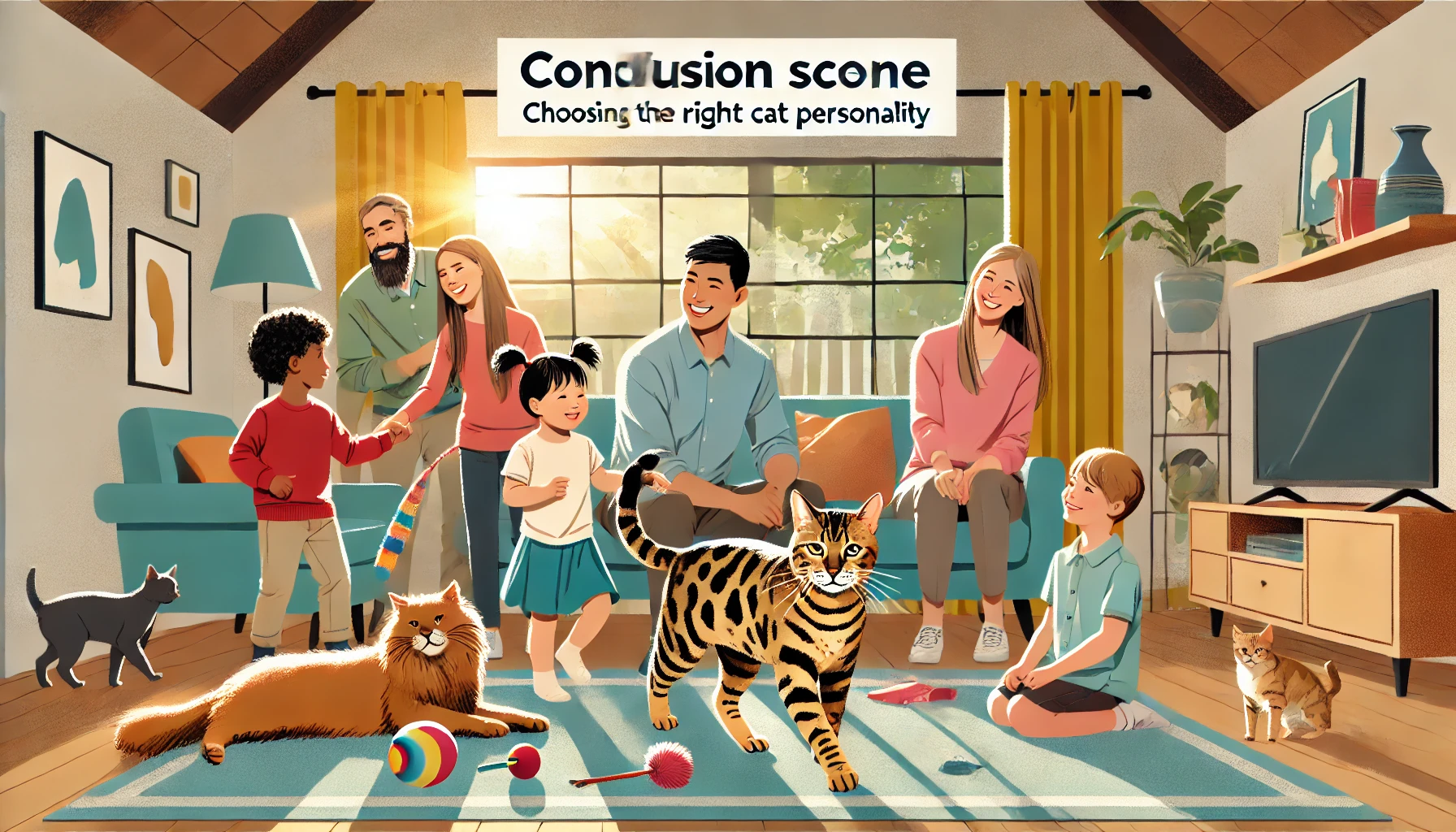
Conclusion: Choosing the Perfect Cat Personality for Your Home
Adopting a cat is not only a rewarding experience, but finding the right personality to suit your lifestyle will help in building a long-term, enriching relationship.
Understanding the various cat personalities — from independent ones to those that are very affectionate — helps you make an informed decision that benefits both you and your new feline friend.
Cats, just like humans, have unique characteristics.
Learning to recognize these traits will make the adoption process smoother and more successful.
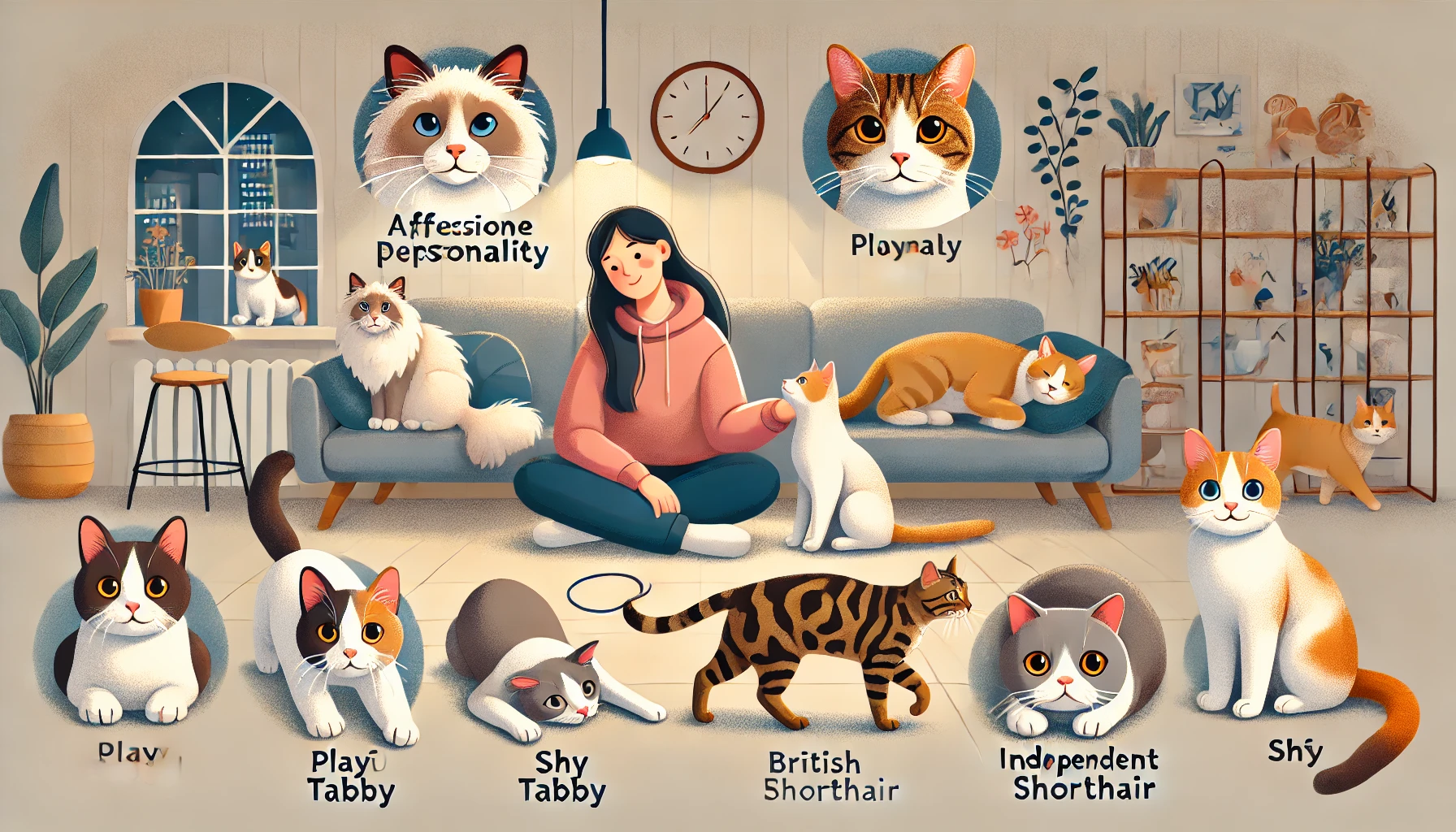
Why Understanding Cat Personalities Is Key
Each cat is different, and knowing their personality in advance ensures that the cat will fit easily into your household.
Whether you’re searching for a docile and gentle cat for a family with children or an independent one for a busy professional, matching personalities to lifestyles leads to a harmonious environment.
Taking the time to assess both a cat’s behavior and needs guarantees a positive experience for both parties.
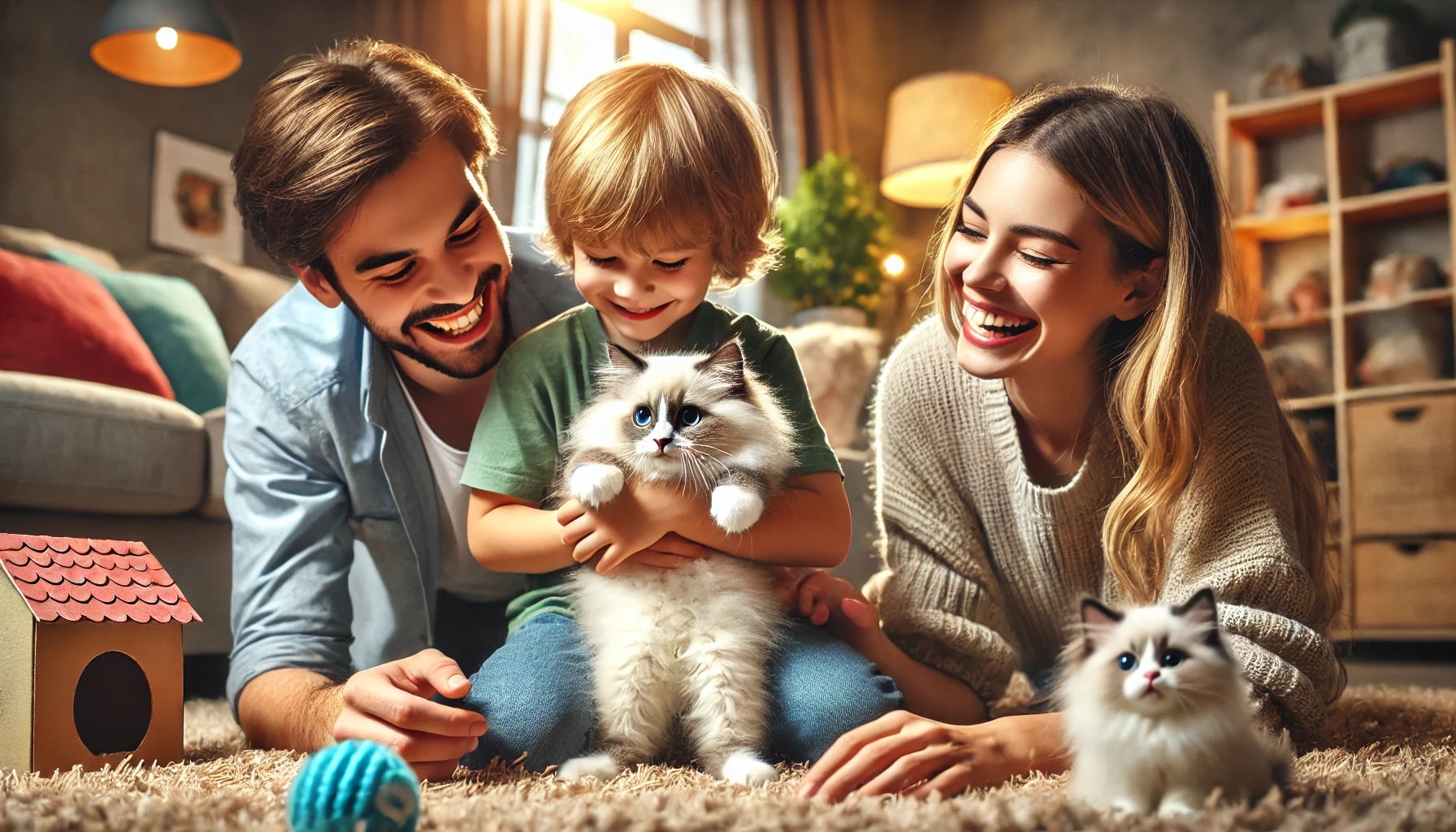
Tips for a Successful Adoption
- Observe Personality: Take time to watch a cat’s behavior before making your selection. Note their interactions with people and their surroundings.
- Provide a Safe Area: Ensure your home is ready to welcome your new cat with a safe and comfortable area to help them acclimate.
- Be Considerate of Their Needs: Every cat has different needs; some may be social, while others are shy. Give them time and space to become comfortable.
- Positive Reinforcement: Reward good behavior with treats and affection to establish good habits from the beginning.
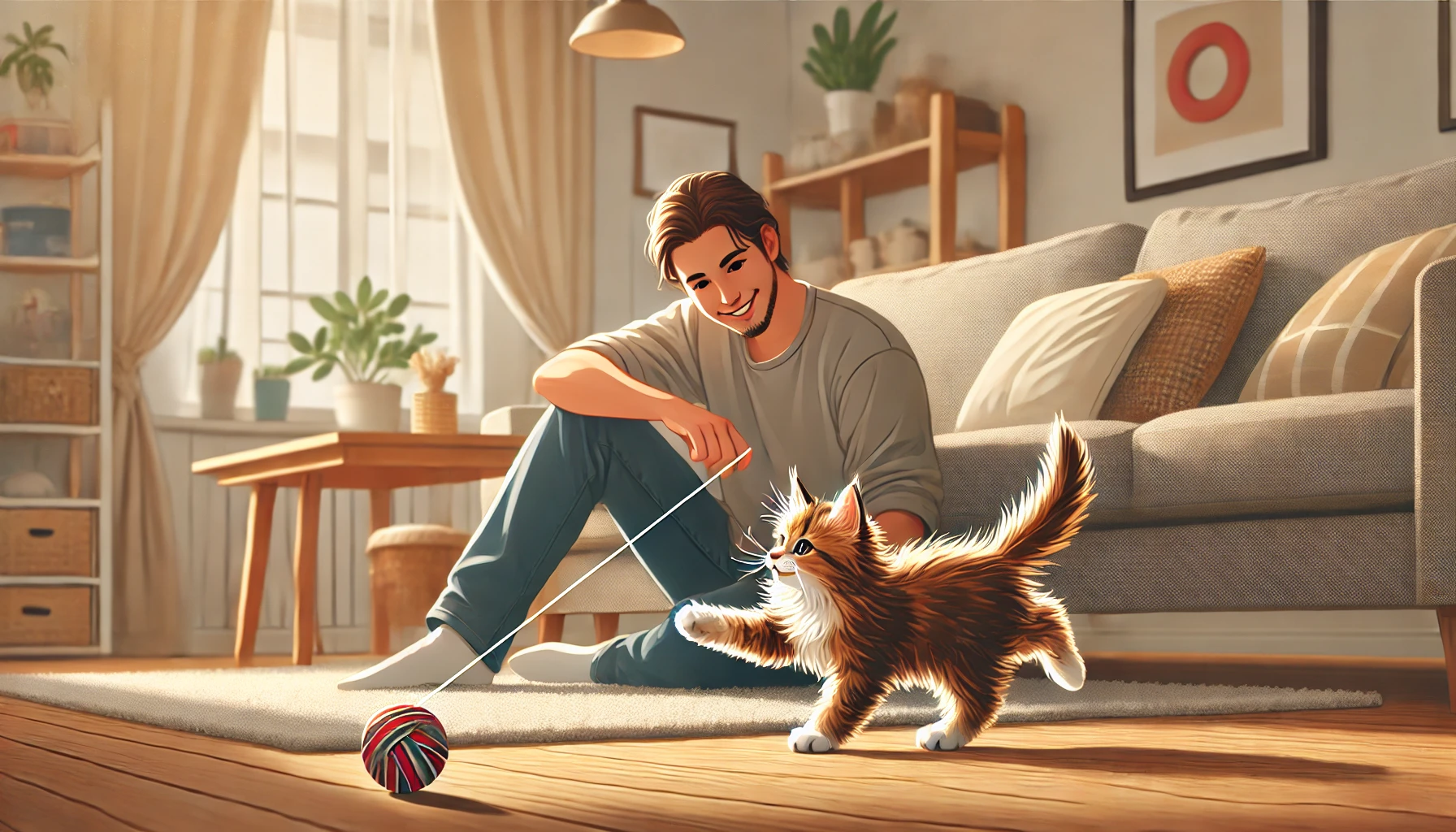
Building a Strong Bond with Your New Cat
Once you’ve chosen your new cat, it’s important to invest time and energy into developing a close bond based on trust.
Building trust with your new cat takes time, predictability, and patience.
Allow them to approach you, handle them gently, and reward behaviors you appreciate.
In time, your cat will learn to trust you and feel confident in their new environment, paving the way for a long-lasting relationship.
By considering your new cat’s disposition and personality, you’ll ensure a smooth transition and a loving relationship.
Matching cat personalities with your lifestyle isn’t just about making things easier for you — it’s about making sure your cat is happy, comfortable, and secure in their new forever home.
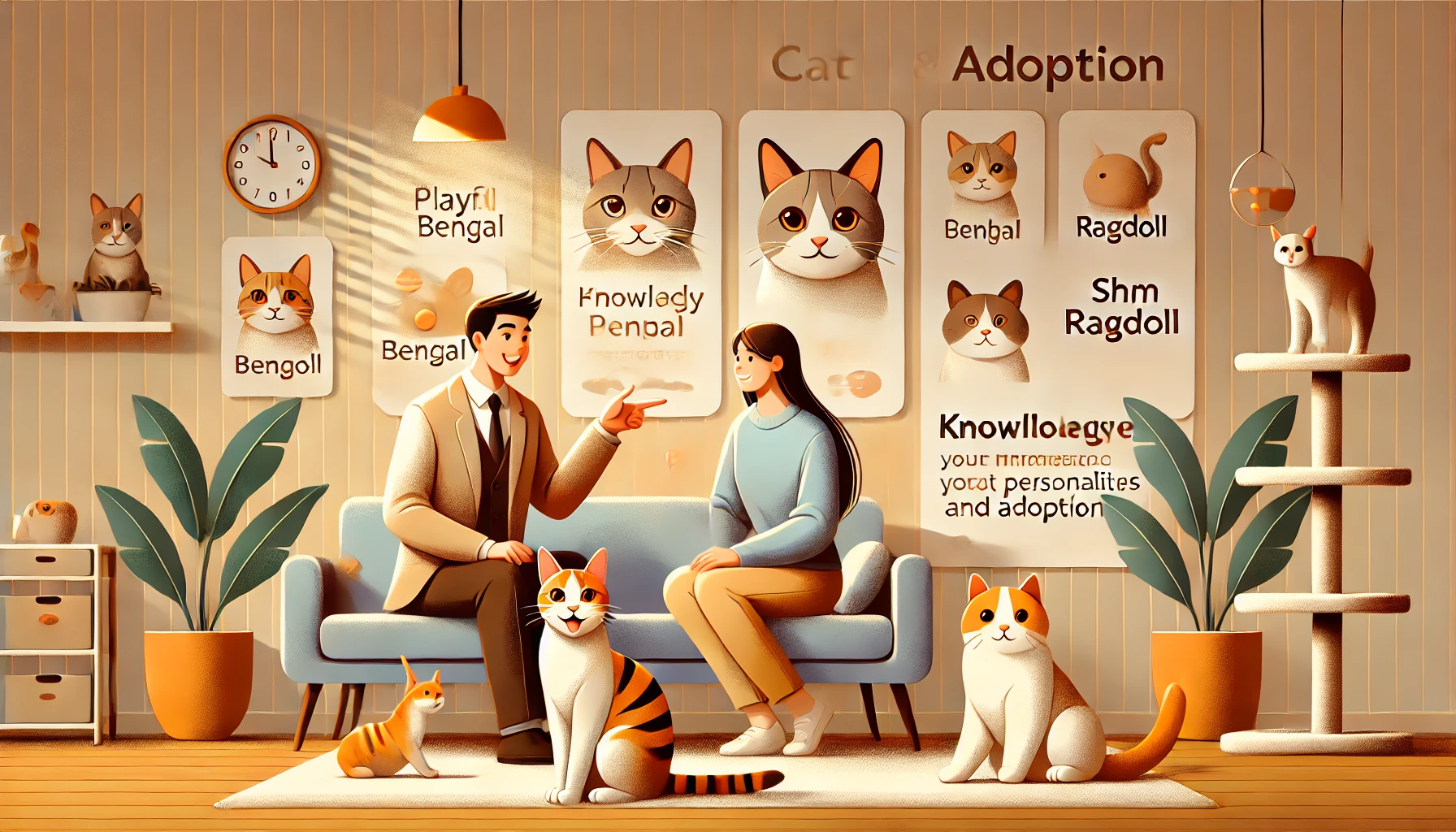
Cat Personality and Adoption: Frequently Asked Questions
Here are some of the most frequently asked questions about cat personalities and how to find the perfect match for your home and lifestyle.
How do I determine my cat's personality?
Observe your cat’s behavior to understand how they relate to people, other pets, and the environment.
Their responses to attention, play, and new situations will help you identify whether they are more independent, social, playful, or shy.
What kind of cat personality is best for families with children?
A calm, affectionate cat that is interactive and tolerates handling is ideal for children.
Breeds like Ragdolls and Maine Coons are typically described as gentle, social, and patient with kids.
Can I change my cat's personality over time?
While a cat’s core personality is largely predetermined, you can encourage positive behavior in your cat with a nurturing environment.
Consistent, gentle interactions and positive reinforcement can help them become more confident and adaptable.
Are independent cats in need of attention?
Yes, even independent cats need attention and affection, though not as frequently.
They enjoy interaction but are also content spending time alone, making them a good choice for owners with busy schedules.
Is there any breed of cat that is more social than others?
Yes, breeds like Burmese, Siamese, and Scottish Folds are known for being social and affectionate.
These cats love interacting with their human companions and thrive on attention.
How much time does it take for a cat to adjust to a new home?
It can take anywhere from a few days to several weeks for a cat to fully adjust to a new home.
Be patient and allow your cat to explore their surroundings and get familiar with you at their own pace.
What is the best way to help a shy cat adjust?
Provide a quiet space where your shy cat can retreat when feeling overwhelmed.
Let them approach you on their terms and gradually introduce them to different parts of the home and family members.
Should I adopt a kitten or a senior cat?
This depends on your lifestyle.
Kittens are playful and energetic but require more time and attention.
Senior cats are typically calmer and settled in their personalities, making them lower maintenance.
How can I bond with my new cat?
Spend quality time every day with your cat by playing, grooming, or just being nearby.
Respect their boundaries and use positive reinforcement to build trust and strengthen your bond over time.

